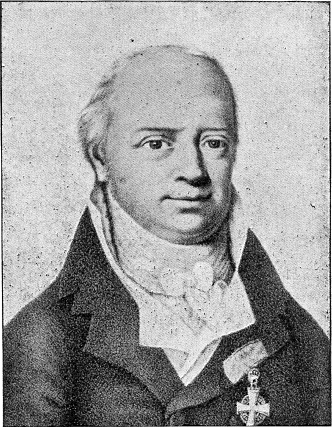|
Phyllanthus Amarus
''Phyllanthus amarus'' is a leafy herbal plant found in tropical regions in the Americas, Africa, India, China,Sri Lanka and South East Asia. Commons names for this plant include gale of the wind, carry me seed, seed on the leaf, pick-a-back, Bhuiavla (Hindi), Bhuiamla (Bengali), stonebreaker, dukung anak (Malay). Description ''P. amarus'' is a small, annual plant that grows to a height of 30-60 cm. Its thin branches spread out, and each branch has two rows of small, elliptic-oblong leaves of 5-10mm long that are arranged alternately. Its radial flowers are star-shaped and of about 2mm in size. It grows well in soil of high moisture with light shade, and reaches maturity in 2-3 months. Constituents ''P. amarus'' contains flavonoids (quercetin-3-0-glucoside and ruin), tannins (geraniin, amariin and gallocatechin) and alkaloids (phyllantine, quinolizidine type, securinine, norsecurinine, isobubbialine and epibubbialine). Uses ''P. amarus'' has been used in the traditional medicin ... [...More Info...] [...Related Items...] OR: [Wikipedia] [Google] [Baidu] |
Heinrich Christian Friedrich Schumacher
Heinrich Christian Friedrich Schumacher (15 November 1757 in Glückstadt, Holstein – 9 December 1830) was a Danish surgeon, botanist and professor of anatomy at the University of Copenhagen. Schumacher carried out significant research work in malacology, in other words on molluscs, and described several taxa. Life Early years (1757-1778) He was born to Joachim Christian Schumacher, a sergeant in the infantry of the Duchy of Schleswig, and his wife, Caroline Magdalene in Glückstadt in present-day Germany. In spite of his family's limited means, he received a good upbringing, and was sent to grammar school in Rendsburg. After confirmation became the apprentice of the regiment surgeon, Mehl, a learned and skilled man, who gave his eager student a thorough introduction to both medicine and botany, thereby waking Schumacher's natural gift for science. By 1773, at the age of 16, his keen efforts got him appointed as a military surgeon with his father's battalion in the army sta ... [...More Info...] [...Related Items...] OR: [Wikipedia] [Google] [Baidu] |
Peter Thonning
Peter Thonning (9 October 1775 – 29 January 1848) was a Danish physician and botanist. Biography Peter Thonning was born in Copenhagen, Denmark. He was the son of Rasmus Andersen Thonning (1740-1817) and Dorothea Spendrup (1755-1835). He became a student in 1794 and studied medicine at the Metropolitanskolen. He was sent to Ghana by the Danish government mainly to study the conditions of plants, especially indigenous plants. He lived there from 1799 to 1803. Thonning had begun systematizing his botanical collections but his herbarium was destroyed during the shelling of Copenhagen by the British in 1807. Only the duplicates and manuscripts in the possession of Heinrich Christian Friedrich Schumacher (1757–1830) survived. Today, around 1,050 samples are preserved at the University of Copenhagen Botanical Garden. Thonning tutored Ferdinand, Hereditary Prince of Denmark (1792–1863) from 1804 to 1810. He served as secretary of the General Customs Board (''Generaltoldkam ... [...More Info...] [...Related Items...] OR: [Wikipedia] [Google] [Baidu] |
Ayurvedic
Ayurveda () is an alternative medicine system with historical roots in the Indian subcontinent. The theory and practice of Ayurveda is pseudoscientific. Ayurveda is heavily practiced in India and Nepal, where around 80% of the population report using it. Ayurveda therapies have varied and evolved over more than two millennia. Therapies include herbal medicines, Dieting#Detox, special diets, Meditation#Hinduism, meditation, yoga, massage, Laxative#Historical and health fraud uses, laxatives, Enema#Alternative medicine, enemas, and medical oils. Ayurvedic preparations are typically based on complex herbal compounds, minerals, and metal substances (perhaps under the influence of early Indian alchemy or ''rasashastra''). Ancient Ayurveda texts also taught surgical techniques, including rhinoplasty, lithotomy, kidney stone extractions, sutures, and the extraction of foreign objects. The main classical Ayurveda texts begin with accounts of the transmission of medical knowledge from ... [...More Info...] [...Related Items...] OR: [Wikipedia] [Google] [Baidu] |
Phyllanthus
''Phyllanthus'' is the largest genus in the plant family Phyllanthaceae. Estimates of the number of species in this genus vary widely, from 750David J. Mabberley. 2008. ''Mabberley's Plant-Book.'' third edition (2008). Cambridge University Press. to 1200. ''Phyllanthus'' has a remarkable diversity of growth forms including annual and perennial herbs, shrubs, climbers, floating aquatics, and pachycaulous succulents. Some have flattened leaflike stems called cladodes. It has a wide variety of floral morphologies and chromosome numbers and has one of the widest range of pollen types of any seed plant genus. Despite their variety, almost all ''Phyllanthus'' species express a specific type of growth called "phyllanthoid branching" in which the vertical stems bear deciduous, floriferous (flower-bearing), plagiotropic (horizontal or oblique) stems. The leaves on the main (vertical) axes are reduced to scales called "cataphylls", while leaves on the other axes develop no ... [...More Info...] [...Related Items...] OR: [Wikipedia] [Google] [Baidu] |
Medicinal Plants Of Asia
Medicine is the science and practice of caring for a patient, managing the diagnosis, prognosis, prevention, treatment, palliation of their injury or disease, and promoting their health. Medicine encompasses a variety of health care practices evolved to maintain and restore health by the prevention and treatment of illness. Contemporary medicine applies biomedical sciences, biomedical research, genetics, and medical technology to diagnose, treat, and prevent injury and disease, typically through pharmaceuticals or surgery, but also through therapies as diverse as psychotherapy, external splints and traction, medical devices, biologics, and ionizing radiation, amongst others. Medicine has been practiced since prehistoric times, and for most of this time it was an art (an area of skill and knowledge), frequently having connections to the religious and philosophical beliefs of local culture. For example, a medicine man would apply herbs and say prayers for healing, ... [...More Info...] [...Related Items...] OR: [Wikipedia] [Google] [Baidu] |



